World's strangest sharks and rays 'on brink of extinction'
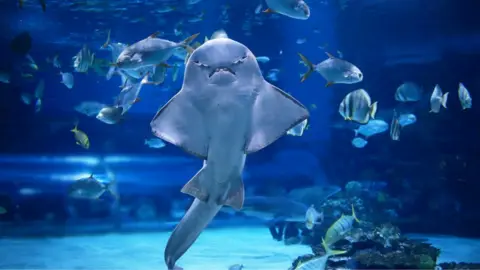 Shutterstock
ShutterstockSome of the world's most unusual sharks and rays are on the brink of extinction because of threats such as commercial fishing, scientists have said.
A shark that uses its tail to stun prey and a ray half the length of a bus are on the list of 50 species.
The scientists say sharks have a bad image and people do not understand how important and threatened they are.
And losing even one of these "living fossils" would wipe out millions of years of evolutionary history.
"The biggest myth around sharks is definitely the perception that they are dangerous, that they are man-eating machines - they're not," marine biologist Fran Cabada told BBC News.
"There have been some negative interactions recorded but they are very infrequent and they're not intentional."
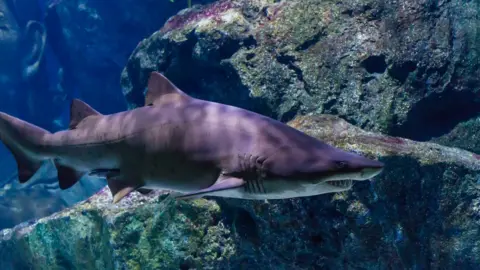 Shutterstock
ShutterstockThis is the first time sharks, rays and chimeras (fish with cartilage in place of bones) have been assessed for the Edge (Evolutionarily Distinct and Globally Endangered) of Existence programme.
Most sharks are at the top of the food chain, which makes them crucial to the health of the oceans.
Losing them would have a big impact on other fish populations and, ultimately, human livelihoods.
"They have very few relatives on the tree of life, so they are very unique and losing them will actually represent a big, big loss," said Fran Cabada.
The assessment found fishing, both targeted and accidental, was to blame for the steep decline in many of these populations, together with habitat loss due to coastal development, degradation of mangrove forests, water pollution and trawling.
"The Edge sharks and rays list comprises some of the most interesting and unique fish we have on this planet," said Dr Matthew Gollock, of ZSL.
"The modern extinction of a single species from this list would cause the loss of millions of years of evolutionary history."
Here are some of the species on the list:
The largetooth sawfish (Pristis pristis)
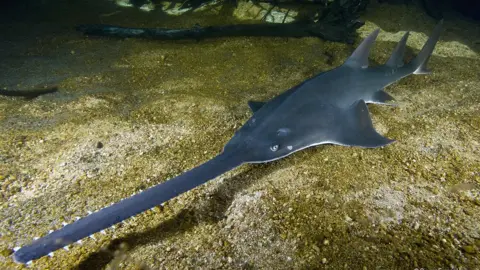 Simon Fraser University
Simon Fraser UniversityThis ray ranks first on the list. It is at risk from unsustainable fishing and being unintentionally caught in nets. The largetooth sawfish's most distinctive feature is its snout (rostrum) lined with sharp teeth to slash its prey. Cowboy boots were once made from sawfish skin.
The Caribbean electric ray (Narcine bancroftii)
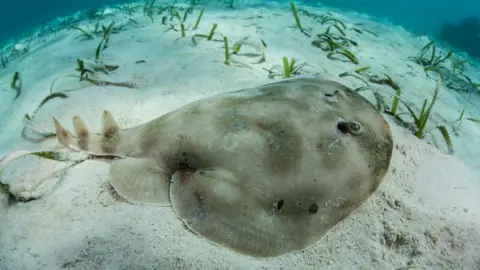 Shutterstock
ShutterstockThis ray can produce an electric shock, which it uses to stun its prey. The fish hide in sand or mud during the day and forage for worms and other small prey at night.
The zebra shark (Stegostoma fasciatum)
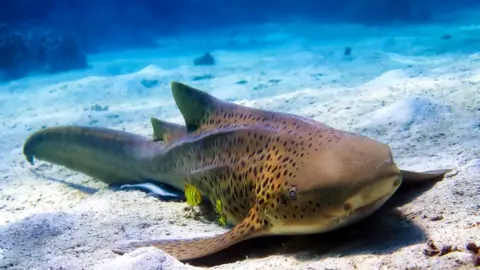 Shutterstock
ShutterstockThis shark changes in appearance over its lifetime. The young are born with zebra stripes, which change to spots as they get older. It lives on the sea floor, and has a lifespan of 25 to 35 years.
The whale shark (Rhincodon typus)
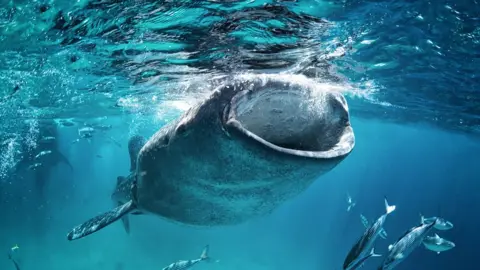 Shutterstock
ShutterstockThe biggest fish in the sea, reaching up to 20m (65ft) in length, it is a filter feeder, relying on plankton and small fishes to survive.
The basking shark (Cetorhinus maximus)
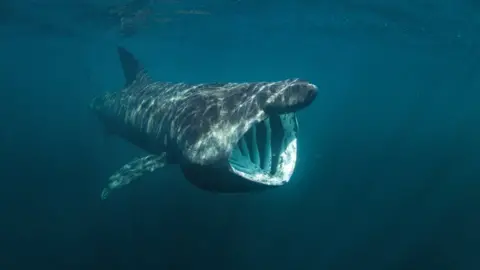 Shutterstock
ShutterstockThe basking shark is the second largest species of shark (and fish) in the world behind the enormous whale shark.
Follow Helen on Twitter.
